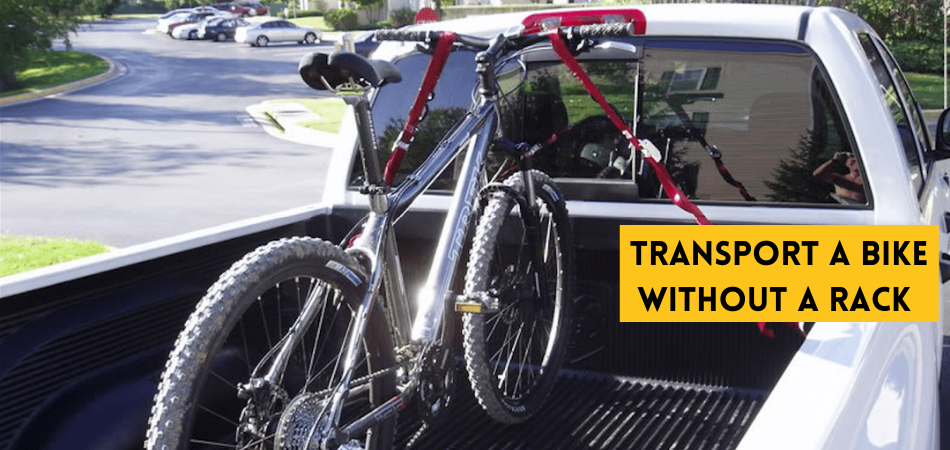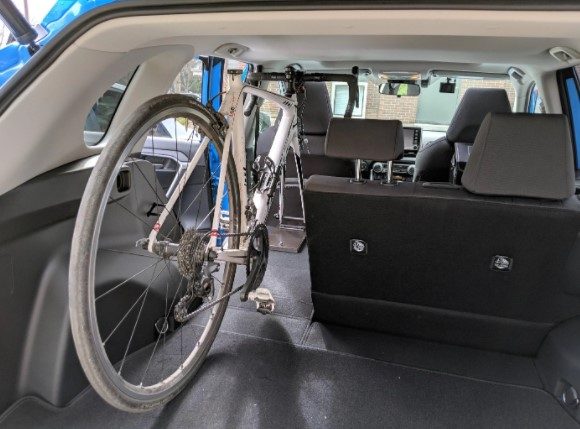No doubt, the easiest method of transporting a bike is with a bike rack. However, not everyone may be willing to spend the extra money to acquire one. While any bike owner can learn how to transport a bike without a rack, it is crucial to learn the proper way before attempting.
If you live in an area with rough terrains, then the odds are good that you may have to transport your bike at some point. Other situations that may raise for you to transport a bike could be; mountain biking, bicycle camping, or simply a faulty bike.
Whatever the case, learning other alternatives for transporting a bike will come in handy. Though if not done right, the alternatives may damage the cycle. Hence, the need for putting this guide together.
Contents
How To Transport A Bike Without A Rack?
When you don’t have a bike rack, the next logical option may be to bundle the bike into the car trunk or fasten it atop the car. These are good options but must be done right to avoid damage to the vehicle and the bike. Here are a few methods on how one can transport a bike without a rack;

1. Get The Bike Inside The Car
A cost-effective method of transporting a bike without a rack is getting the bike inside your car. The only tool needed for this method is a durable strap. However, to ensure safe transportation of the bike, it is essential to confirm that the car has enough space to accommodate the bike. If yes, then follow these steps;

- Clean Up The Bike: Before getting the bike in the car, it should be first cleaned, especially the tires. If the bike has been riding, then it is only sensible to clean it first before introducing it into the vehicle. A wet cloth, wipes, or brush should be used to clean the bike tires, handlebars, and frames. Be sure to remove all dirt particles or manure from the bike.
- Remove One Or Both Wheels: Depending on the size of the bike and the size of the vehicle, one or both wheels may need to go off. If one wheel is taken off, store it in the trunk with wheel bags. The other wheel should be cog-side down to protect the bike’s gear from getting damaged by the spokes.
- Bring Down The Rear Seat: After removing one or both tires, the next thing to do is to fold down the rear seat. Doing this will create sufficient space for storing the bike
- Place The Bike Chain On The Smallest Ring: To protect the car’s interior from oil stains, it is crucial to put the bike’s chain on the smallest ring. This is most important if the bike will be on the car seat and not on the floor. Also, put a piece of cloth under the pedal to collect any dirt that may come off
- Put The Bike Into The Car: When putting the bike into the car, it is crucial to lay it with the gear facing up so that the bike’s weight is not resting on the gear. The pedal should be below a 12 O’clock position to keep the bike stable when the car is in motion.
- Use A Ratchet Straps Or Bungee Cord To Fasten: Not every cord will be able to hold the bike securely in place like a bungee cord or ratchet strap. So, before moving the car, it is essential to keep it firmly in place with one of these straps
2. Transporting A Bike On Top Of The Car
This method has a lot of cons to it. For instance, there is the possibility that the bike may fall off during transportation because of a heavy bump. Or worse! It may get stolen. Also, since this technique requires the cycle to be upside down on the car, the car’s paint may be dented. If done right, however, these problems should be reduced to the barest minimum. To use this method safely, then follow the outlined steps;

- Remove The Front Wheel: To ensure risk-free transportation, the bike owner should disassemble the front wheel and turn it upside down with its handlebars facing up. Place a clean, thick cloth on the car roof where the bike will be installed to prevent dents in the car paint.
- Fasten The Bike On The Roof: When using this method, one must take extra precautions. The straps used to fasten the bike on the roof must be durable. The best options will be ratchet straps or bungee cords. Also, before laying the bike on the car, the crossbars and rails should be examined to determine how the cycle will be applied. Place the bike in the middle of the roof and fasten with the straps. It shouldn’t be too tight to exert too much pressure on the car or too loose to hold the bike. It will be better to follow the straps’ instructions for better results.
3. Transporting The Bike In A Car Trunk
It is also possible to transport one’s bike in the car trunk. However, this method involves disassembling most of the bike’s components and getting a travel-bike case. The pedals, front wheel, and handlebars should be taken off and stored in the case.
The biker should keep a lot of bubble wraps in the case to cushion the bike, keeping it safe throughout the journey. Though assembling and reassembling may not be appealing to many bikers, this method may be the safest for long-distance trips.
However, if you’re getting a foldable ebike, that’d be a no brainer to put it into the trunk. All you have to do is fold the bike in half, secure it in the truck, and get going.

Is It Safe To Transport A Bike Without A Rack?
These days, most mountain bikers and bicycle campers use an e-bike to save their energy for activities other than pedaling. However, even the most perfect electric bike for camping will weigh a ton and may not be easily transported without a rack. All of the methods discussed above have their downsides. Transporting a bicycle inside the car can result in the cycle getting damaged by other objects in the vehicle during the trip.
Transporting a bike on top of the vehicle could leave it vulnerable to theft or falling off, especially on the freeway. The third method also leaves the bike at risk of getting damaged during a bumpy ride. That said, using a bike rack is safer than these other methods, but without a bike rack, these alternatives suffice if done correctly.
Conclusions
A bike is an important asset for a person who has one. Bikes are not just used for transportation but also for maintaining a healthy lifestyle and experiencing new landscapes and adventures, especially when it’s a relatively expensive ebike. Enjoying the pleasures of bike riding is great.
However, the fun ends when they have to be transported back in the absence of a rack. At this point, most bike owners can’t help but wonder how to transport a bike without a rack. Following the guidelines in this write-up should help.

